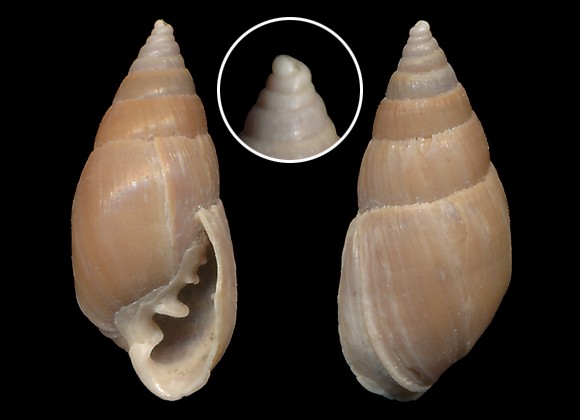
Grazer and detritus feeder in the shallow infralittoral.
Original taxon: Voluta denticulata.
Intertidal, Torre Chianca, Lecce, Puglia, S. Italy. 7,5mm
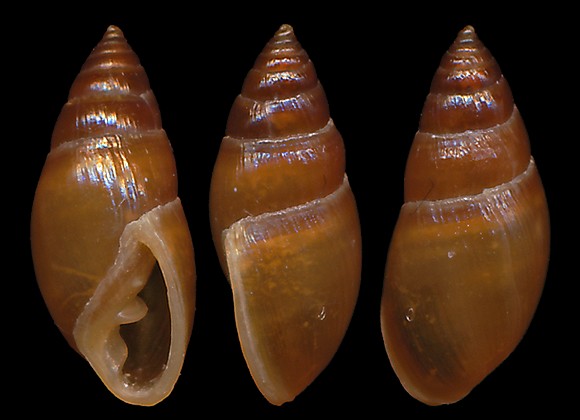
« Voluta with seven or eight volutions, tapering to a fine point, the lower one large, the others gradually decreasing; of a semi-pellucid horn-colour, inclining to purplish-brown towards the top; aperture oblong-oval, half the length of the shell; outer lip furnished with two or three tubercles near the margin, and frequently with three or four white denticulations further within the aperture; columella plicated, with three or four white folds, which are much elevated, and appear like teeth, but spirally turn with the columella. […] It is subject to some variety with respect to the denticulations on the outer lip; some have more, others less, or even destitute of them in young shells; the plications on the columella vary also from two to four, but most commonly three. […] it is found on the roots of rushes in marshes near Faversham. Possibly the marshes where they were found, were subject to the flux of the tide… » – G. Montagu: Testacea Britannica part I, London 1803, p.234-235. – Indeed, the species lives more in marine conditions than myosotis.
On sand at low tide, Vigo, Galicia, NW. Spain. 7mm.
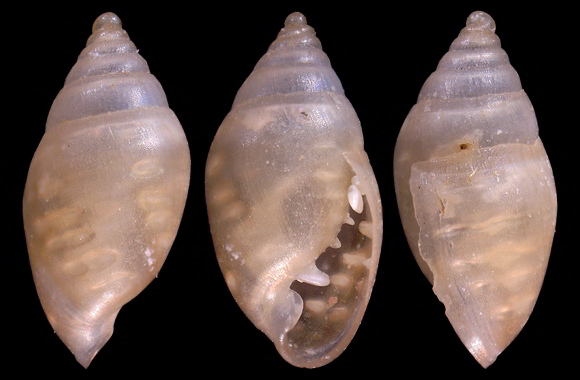
Presence, especially in young specimens, of a various number of weak labial denticles, often at the edge, sometimes also deeply inside, as noticed by Montagu. – Subadult collected at 2-3m deep, in shell grit, at the foot of the citadel, south of the jetty, Methóni, Messinia, Peloponnese, SW. Greece. 3,5mm.
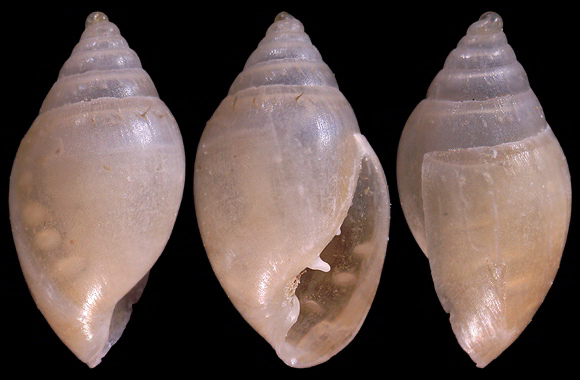
Notice the unobtrusive spiky perio under the suture. 3,8mm.
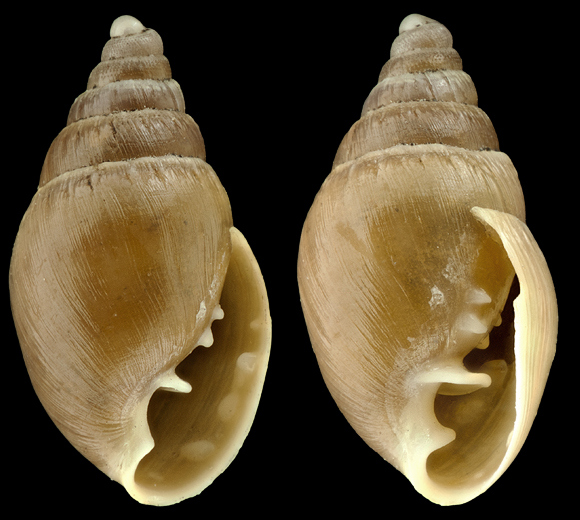
– (CC BY) –